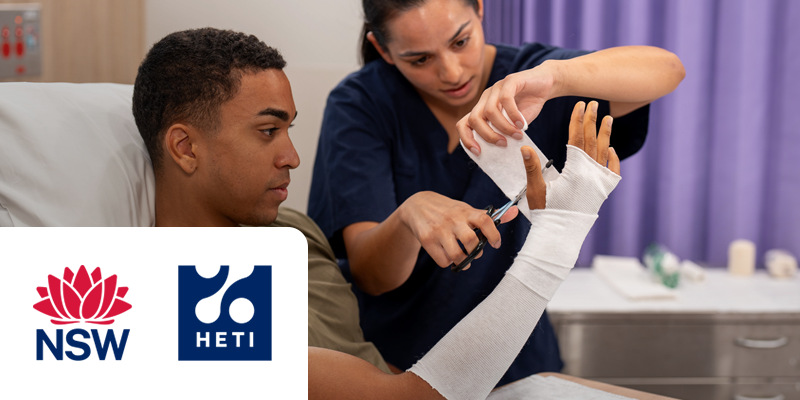Emergency nursing education and training
NSW Health sees over 3 million emergency patient presentations per year, equating to approximately 3,000 per 100,000 population each month (HealthStats NSW, 2021).
The Health Education and Training Institute (HETI) have partnered with the Agency of Clinical Innovation (ACI), the Emergency Care Institute (ECI), and the Nursing and Midwifery Office on a state-wide project aiming to improve emergency care patient and staff experience. The project aims to standardise the provision and quality of emergency nursing education and provide the system with confidence in nurse-initiated emergency care.
HETI has led the development of a nursing capability framework, a standardised education pathway, and education and training resources for NSW.
Emergency Nursing Capability Framework
Developed with expert emergency nurse representatives across NSW Health Local Health Districts and Specialty Health Networks, the Framework enables the development of an emergency nursing education pathway, guiding nurses as they develop from novice to expert.
Read more about the Framework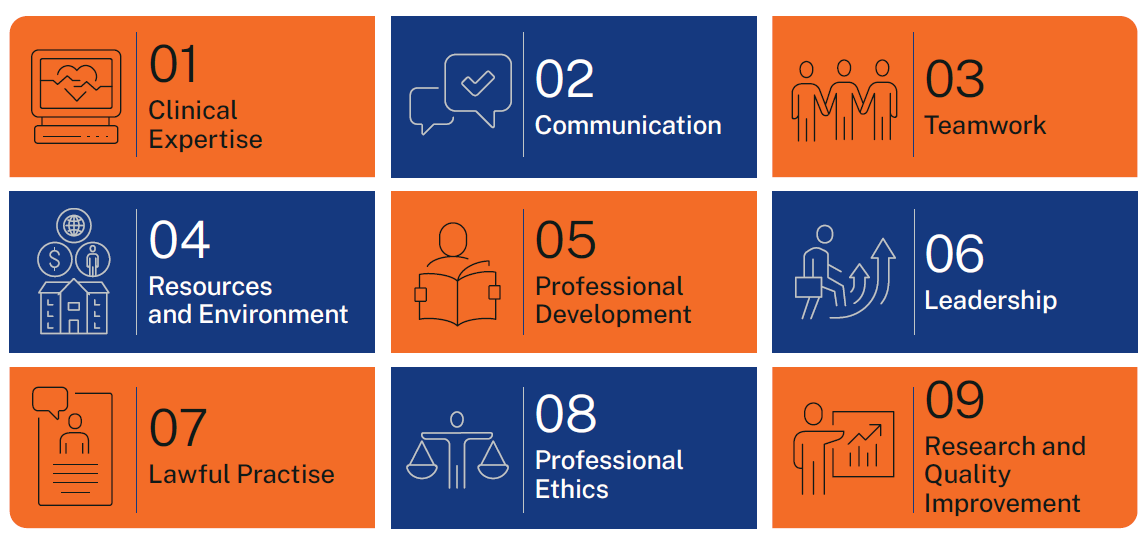
Emergency Nursing Education Pathway
The Emergency Nursing Education Pathway is underpinned by the Nursing and Midwifery Board of Australia (NMBA) Standards for Practice. The pathway begins after a nurse has completed their Bachelor of Nursing (or equivalent) degree, and mandatory and targeted nursing training.
The steps in the pathway that follow can be navigated in a flexible, non-linear fashion to suit an individual nurse’s needs and circumstances. Nurses can progress through the pathway at their own pace.
Emergency care settings are unique dynamic environments. Early in their emergency career journey nurses will complete two education modules:
- Nursing in Emergency Care Settings (493013476) highlights the nuances of caring for undifferentiated patients, and the importance of recognising red flags and human factor influences on clinical practice in the emergency care setting.
- Introduction to Emergency Care Assessment and Treatment Protocols (ECAT) (493029240) provides an overview of the nurse initiated care policy and protocols, enabling nurses to safely initiate timely care using the ECAT Protocols.
The Emergency Nursing Transition to Speciality Practice (TTSP) program is designed to be completed over 6-12 months. Nurses develop their theoretical knowledge and clinical expertise through online, face-to-face and experiential learning.
During the transition to becoming a competent emergency nurse, additional specialist education and training will be completed. These programs allow nurses to deliver more specialist care and treatment and work to their full scope of practice. Programs include:
- Peripheral Intravenous Catheter (PIVC) access
- Plastering
- Suturing/Wound closure
- Nurse Initiated Xray (NIX)
- Ocular assessment
The continuum of the novice to expert emergency nurse pathway requires nurses to continuously develop their knowledge, skills and experience in specialist areas of emergency care including resus, advanced life support, trauma and triage.
Supporting Emergency Care Assessment and Treatment (ECAT) Protocols
Emergency Care Assessment and Treatment (ECAT) is a state-wide, co-designed project that standardises nurse-initiated emergency care, reduces unwarranted clinical variation and improves patient experiences and staff satisfaction.
The ECAT Protocols have been developed to support nurses to initiate emergency care according to their relevant scope of practice and following the completion of prerequisite education and training. These Protocols represent ‘best practice’ clinical guidance, based on evidence from existing local guidelines and expert consensus.
This animation video provides an introduction to the ECAT Protocols.
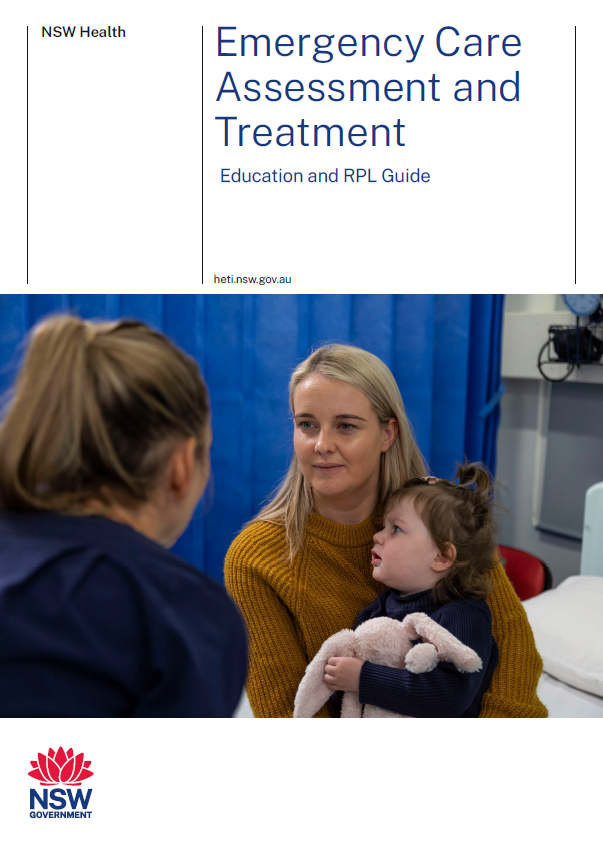 Emergency Care Assessment and Treatment Education and RPL Guide
Emergency Care Assessment and Treatment Education and RPL Guide
The ECAT Education and Recognition of Prior Learning (RPL) Guide has been developed to support the transition of the existing nursing workforce to use ECAT Protocols by recognising and documenting prior learnings. It is informed by the Nursing and Midwifery Board (NMBA) Standards of Practice and current statewide NSW nursing educational programs.
My Health Learning resources
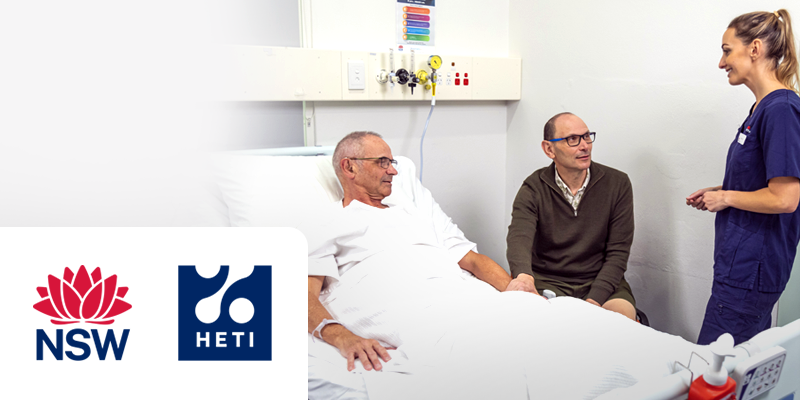
Nursing in emergency care settings
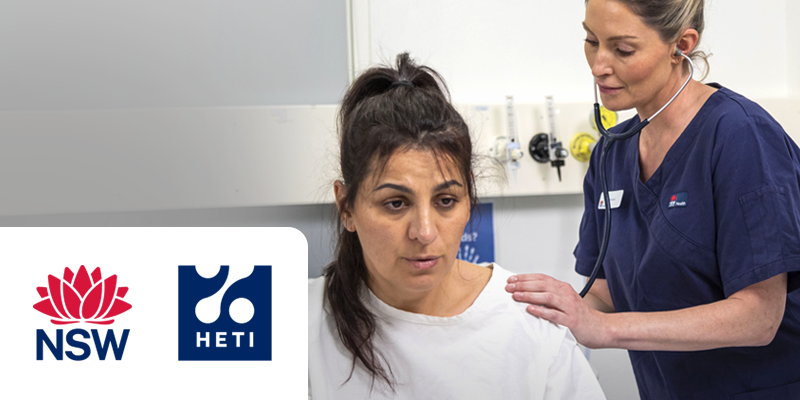
ECAT - Introduction to Protocols
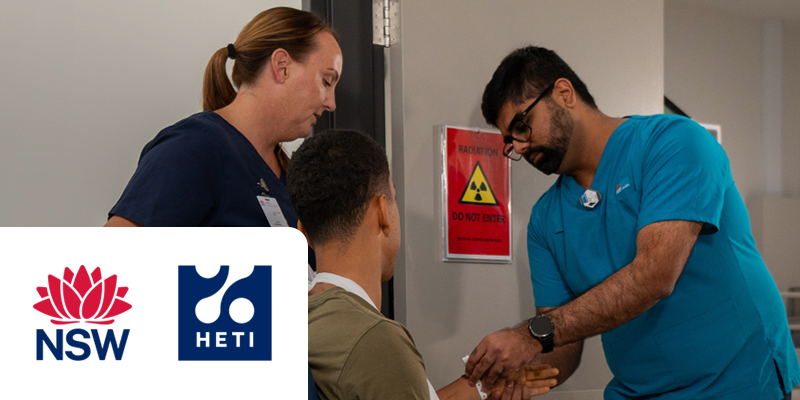
Nurse initiated x-ray (NIX) education program
